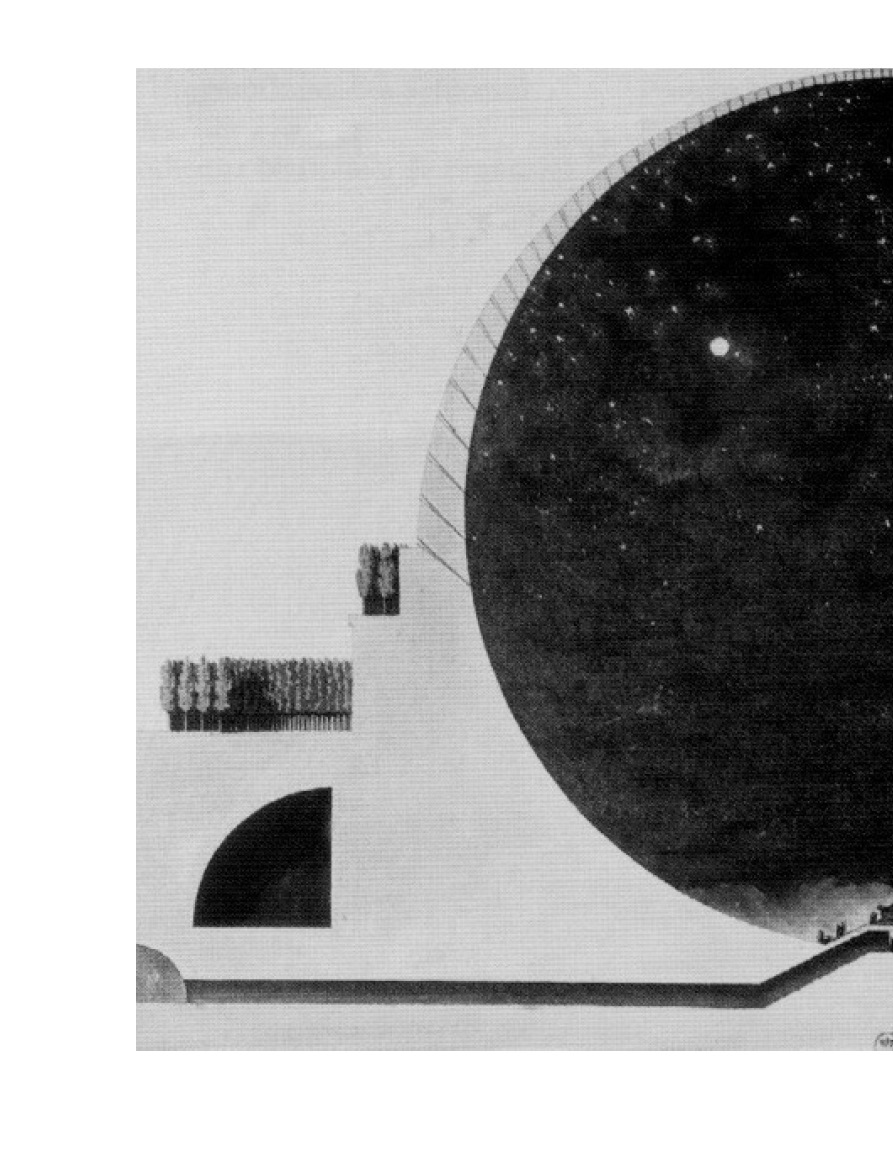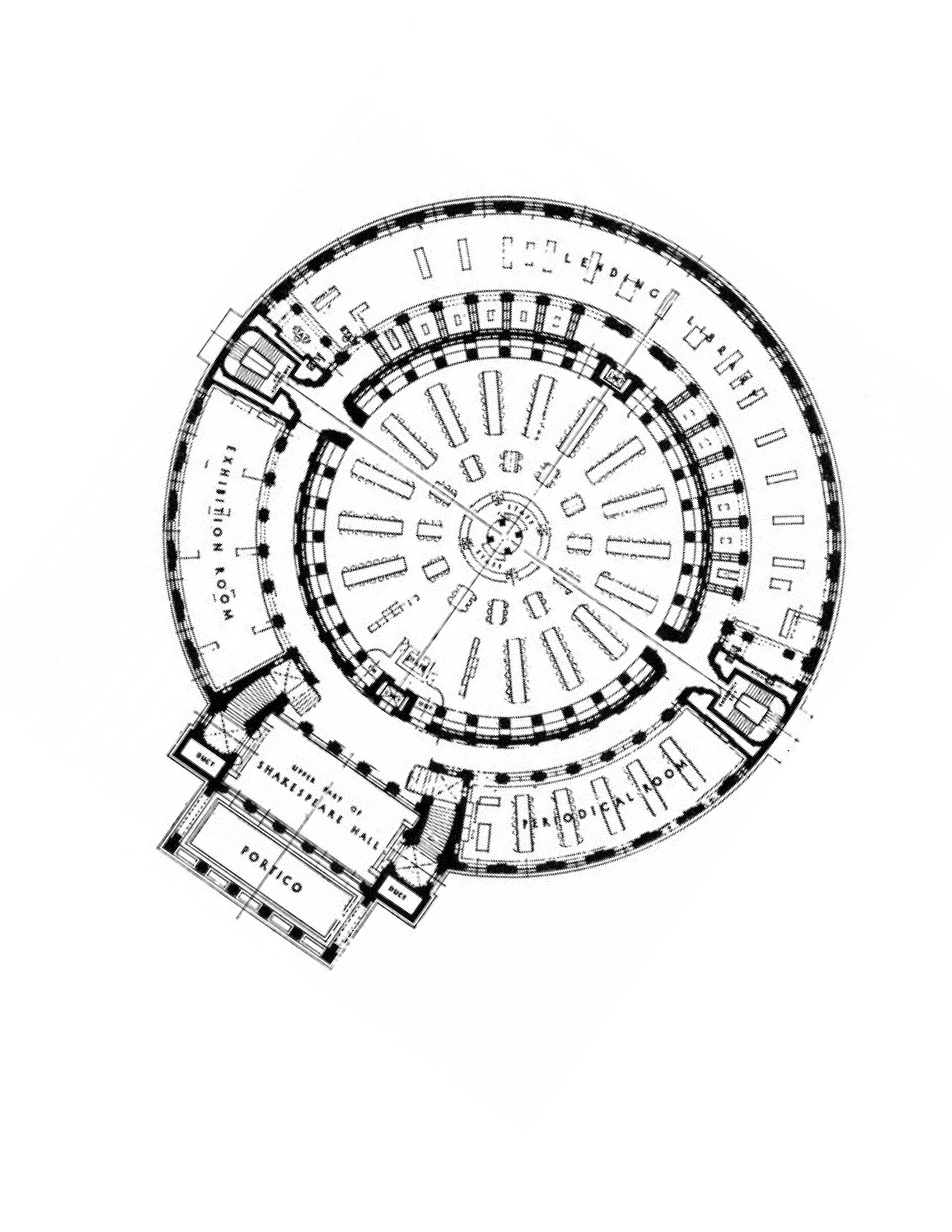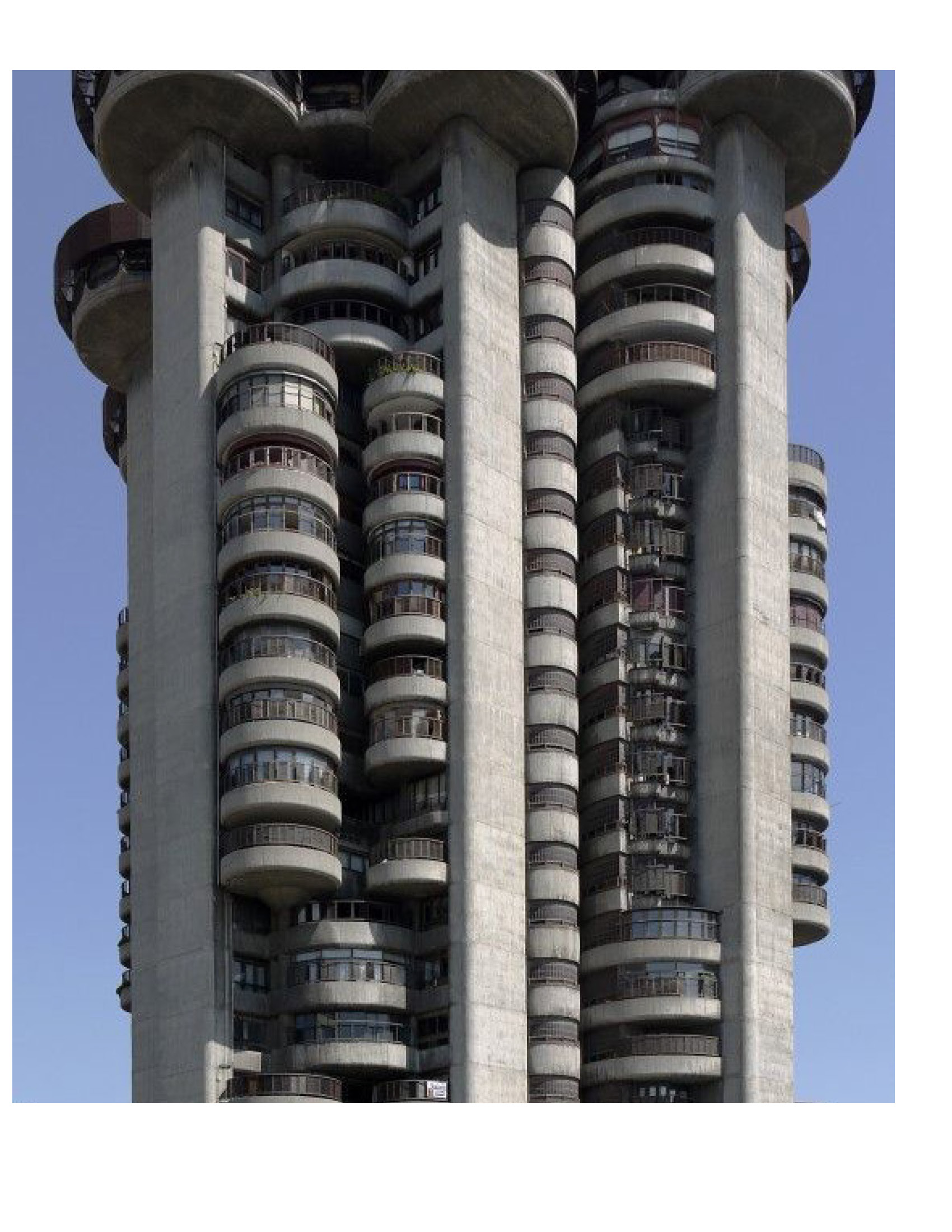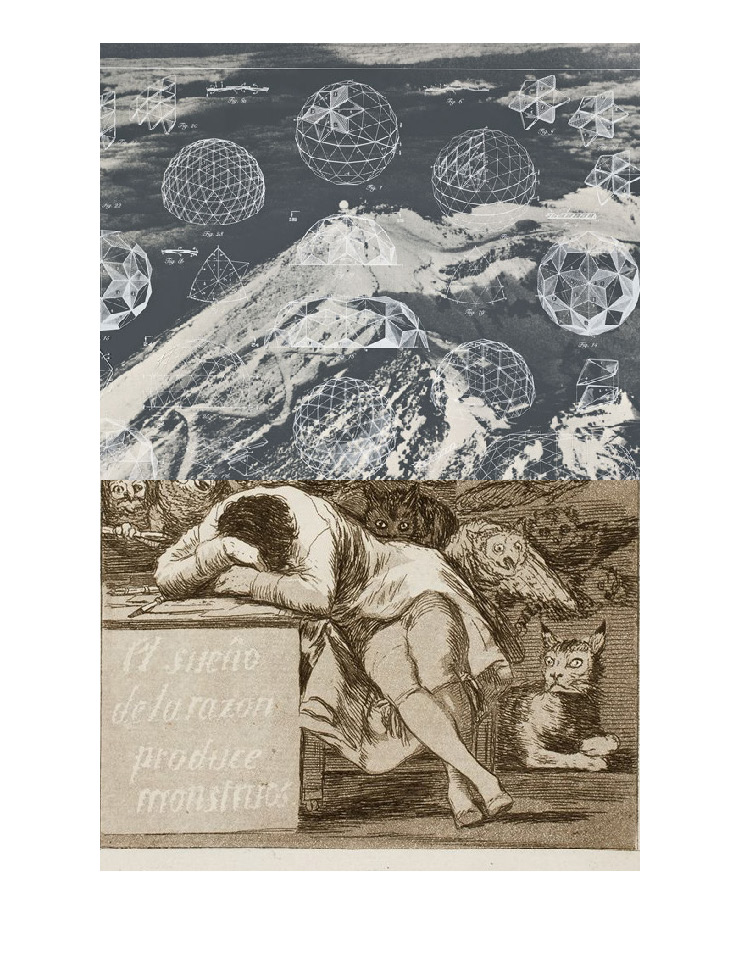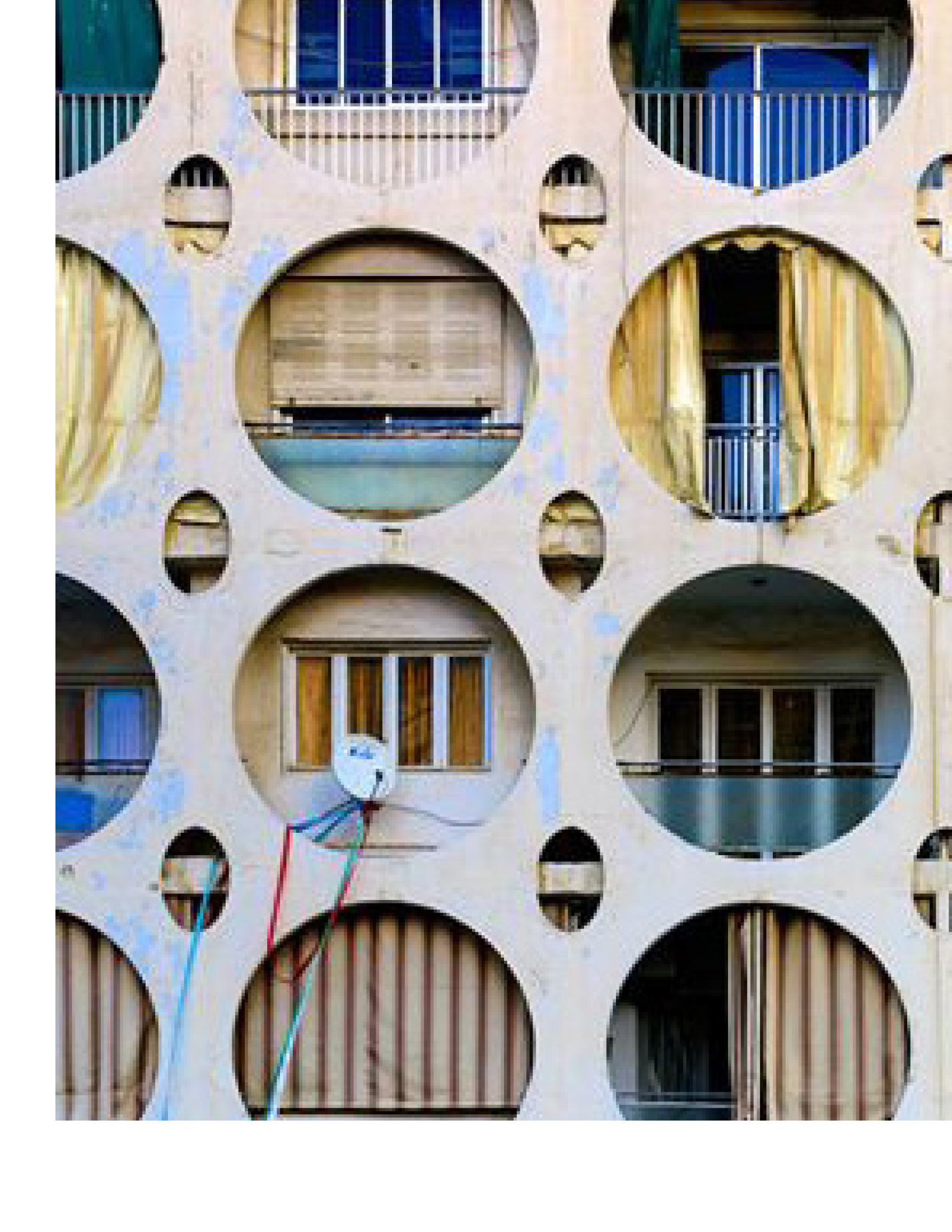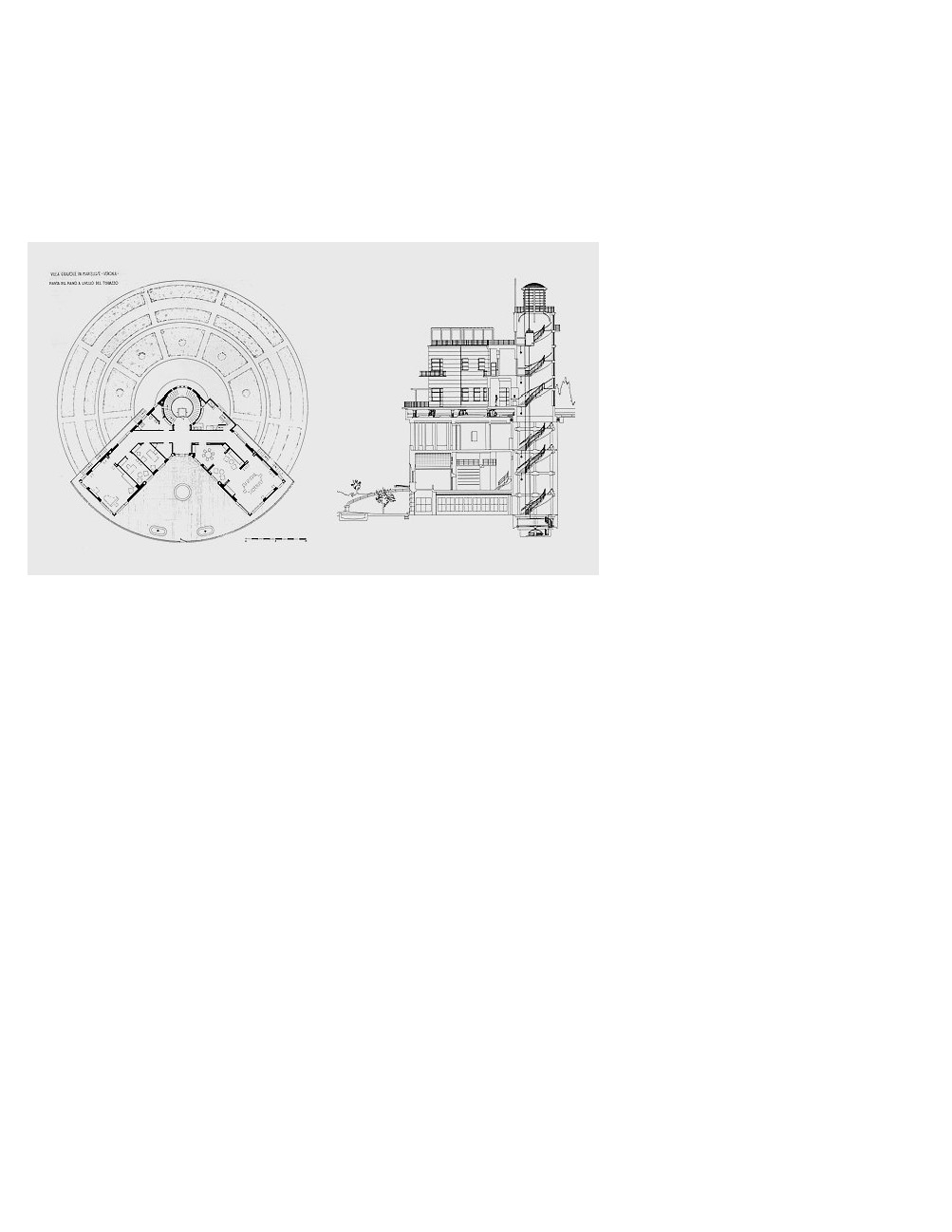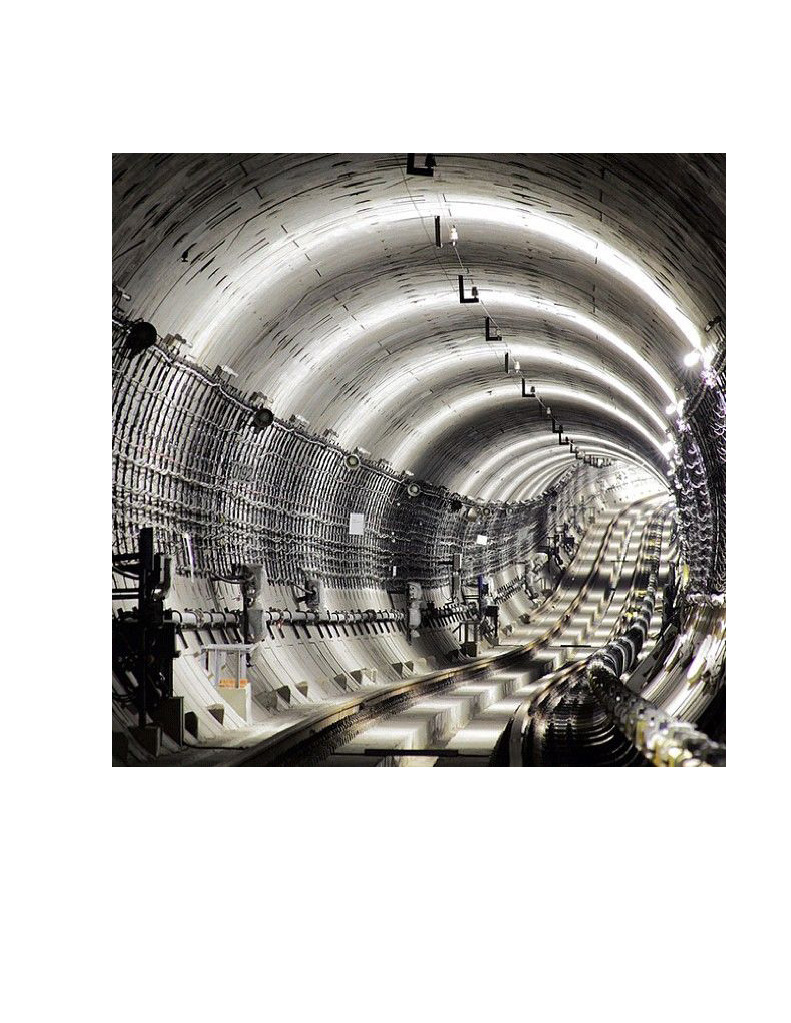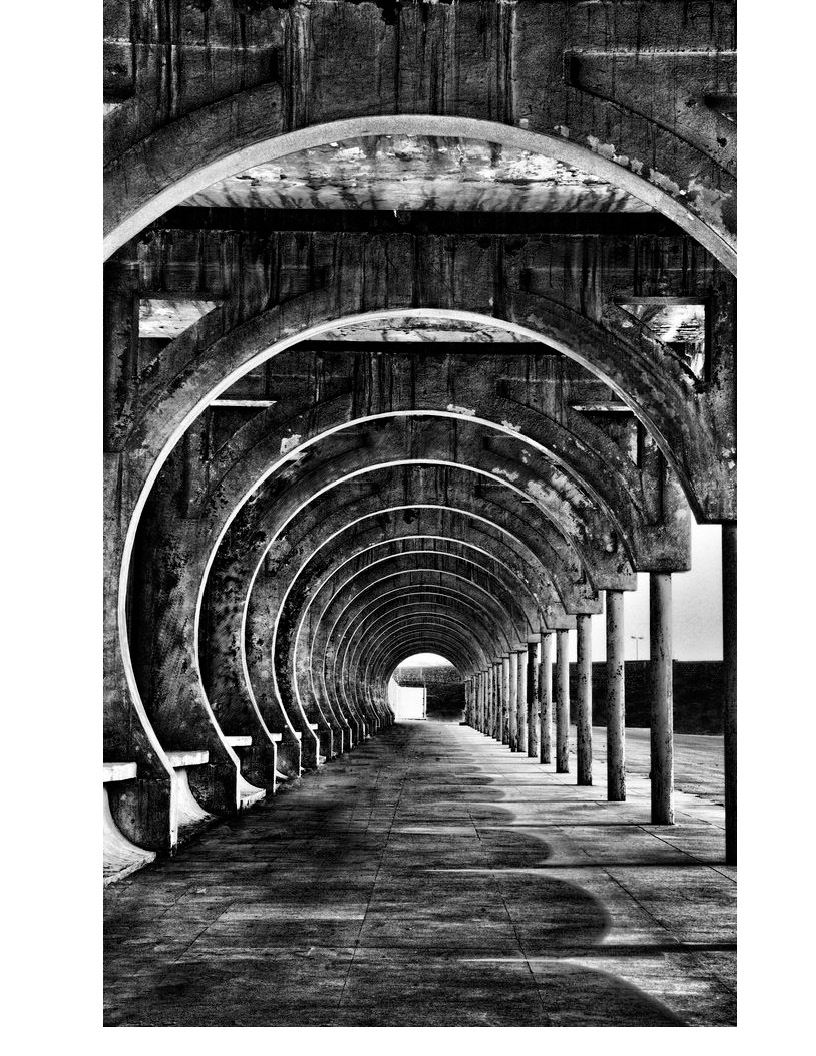almost spheres
RESEARCH & OBSESSION, 2014 —
COLLATERAL BOOK, 2015
EXHIBITION, GROUP SHOW ‘PALLETIAL GALLERY OF ALMOST SPHERES,’ 2019
Architecture is in constant paradox.
Its physicality is rigid, imperfect, and generally motionless. It has been objectively categorized, organized, and analyzed in attempts to find what is good, what is sustaining, and what should be next. The way buildings can be categorized within historical chronology is evidence that architecture can be articulated along a linear timeline. Perhaps more pertinent is that time also tells much about architecture. With an awareness that architecture is constantly redefined and inevitably recontextualized against a larger architectural discourse of what has been done before, it becomes evident that (paradoxically enough) architecture, like time, is not a processional line, but in fact, a loop, or a vortex. It is both present and elusive in the same moment, allowing a glimpse of existence and a perpetual interpretation thereafter. Attempting to understand architecture within the parameters of time, a dimension that is typically overlooked in common consideration, it becomes clear that a sincere architecture is limitless.Architecture's physical and theoretical simultaneity produces an existence that is static and fleeting within the same moment-- a tension that has proven to be productive. As an internal body of academia and philosophy, and external discipline responsive to socio-political and technological developments, architecture is in constant negotiation between its history and place, and continually regenerating contexts, influences, and investigations. Circumventing within its own loop, architecture struggles to propose truly new strategies, models, concepts, ideas, and understandings.
A Derivative Approach
In “Architecture, Essay on Art,” Etienne-Louis Boullee considers the existence of “pure invention” that is not imitative of a natural object. He claims that "it is beyond all question that no idea exists that does not derive from nature."[1]This challenges notions of beauty and originality and brings into question relativity and dependence in architecture to patterns and logics of nature.
Boullee's examinations of nature-driven principles, designs, and effects extend a wide range. In attempt to draw from the basics, he considers fundamental volumes and their essential qualities, properties, and analogies with the human organism. The considerations conclude that regular volumes have simple form, regular planes, and self-repetition. The regularity, symmetry, and variety of regular volumes represent order and clarity, and in combination, proportion. On the contrary, irregular volumes have a multitude of planes that result in a "confused impression,"[2]and thus, create chaos. Regularity providing beautiful shape, symmetry providing order and proportion, and variety providing diversity further result in "volumetric harmony."[3]
The properties and effects of a regular volume are derivative of nature, and demonstrate their grandeur most exceptionally in the volume of a sphere. The sphere has "the simplest possible form, the beauty of which derives from its uninterrupted surface." Of all known solids with a given volume and surface area, it has the smallest surface area and greatest volume. Every point on the surface of a sphere is equidistant from its center, assuring that "no optical effect can ever spoil the magnificent beauty of its shape."[4]Geometrically proven to be an "indefinable polyhedron," the sphere presents a paradox-- "the most infinite variety is derived from the most perfect symmetry."[5]
The description expands as follows: "[The sphere] combines strict symmetry with the most perfect regularity and the greatest possible variety; its form is developed to the fullest extent and is the simplest that exists; its shape is outlined by the most agreeable contour and, finally, the light effects that it produces are so beautifully graduated that they could not possibly be softer, more agreeable or more varied. These unique advantages, which the sphere derives from nature, have an immeasurable hold on our senses."
Boullee's observations lead to a conclusion: "the sphere is, in all respects, the image of perfection."
What is Perfection?
Aristotle describes perfection as that “which is complete—which contains all the requisite parts; which is so good that nothing of the kind could be better; which has attained its purpose.”[6]The word comes from the Latin “perfectio” or "perfectus,” which is a derivative of “perficio,” meaning “to finish,” “to accomplish,” or “finished,” “a finishing.”[7] The sphere, containing all the exuberance of natural harmony does indeed seem to satisfy the description. However, architecture is generally not volumetrically spherical; so what does perfection mean for architecture?
Perfection as an ideal has occupied the minds of architects for centuries. Ever since antiquity, it has been viewed as essential to describing beauty and art—as a single quality, found through proportion and harmony of parts. The establishment of orders and the harmonization of Doric and Ionic temples were strictly based on rationed mathematical proportions. Idealized and applied as a governing set of laws, the Classical Orders became a standard of perfection.
Another route to perfection for architecture was through critical and conceptual proposals which were aimed toward a hyper-functional system-society with regenerative requisite parts. The following presents a few examples.
In “Futurist Architecture,” Marinetti and Cinti proclaim that “Each generation will have to build its own city. This constant renewal of the architectonic environment will contribute to the victory… for which we fight without pause against the cowardly worship of the past.”[8]This idea of absolute impermanence shocks the historical position of a timeless and persistent architecture. With the rejection of a monumental, theatrical, reconstructivist, and static architecture, futurist architecture aims to be simple, elastic, light, harmonizing—decidedly elusive and very dynamic. Whereas harmony was once viewed directly linked to nature and only achieved via the materialization of its calculations, it would now be a product of man’s freedom and his “projection of the spirit.” Man is now considered “materially and spiritually artificial” – a characteristic which his architecture must follow to be timely.
In "Space City Architecture," Frederick Kiesler demands a functional building that is "adequate to the elasticity of the life function." Aiming to restructure society by proposing "new possibilities of living," he argues for new architecture to be free from the ground plane and static axis, have "no walls, no foundations," operate via a system of "tensions in free space," and create cities of spherical space.[9]Here is an invitation for fluidity and buoyancy in architecture, where solidity and standards are desensitized and no longer prerequisites for design. This is an anti-relational and non-derivative approach.
In direct relation to Boullee’s fascination of spherical perfection, as it relates to infinitude and design, in 1932, Buckminster Fuller writes in "Universal Architecture"of time and space. He describes time as a single dimension indicative of a distance from center out. Geometrically, he defines this dimension as "any one of the infinity of coincident radii of a sphere," which further questions "the infinity of unity" and "infinity of multiplicity." He credits the spheroidal volume for the potential of "additional dimensional characteristics," that are otherwise non-graphable in Euclidian 3-dimensional geometry. This equates "essence of design" to time control, and therefore "essence of universal discourse" as "time language" or "language of continuity." Since the system operates in a circuit, it negates concepts of fundamentals, as everything is recursive and renewing. Fuller further defines the "universal problem of architecture" as the compassing of space -- the mathematical conversion of space to time. The subsequent problem to compassing space is then controlling this space, and moreover developing selective control that allows for "ever variable complementary harmonic awareness of any and all sense-organizations to be sheltered within the compassed space."[10]Through this depiction of time and space, art, or architecture, is the "net resultant of momentarily (time fix) dominant articulability of ego's cosmic sense," or put simply, a snapshot of timespace. Thus, architecture’s constant inability to effectively utilize the time dimension is exposed.
In the 1960s, young Italian architecture group, Superstudio, tackles ideas of perfection through radical proposals for new societies and utopias. They believe in architecture as a powerful force for progress. In “Twelve Cautionary Tales for Christmas: Premonitions of the Mystical Rebirth of Urbanism,” Superstudio "evoke twelve visions of ideal cities, the supreme achievement of twenty thousand years of civilization, blood, sweat and tears; the final haven of Man in possession of Truth, free from contradiction, equivocation and indecision, totally and for ever replete with its own Perfection."[11]Within this refined world of new architecture, cities regenerate themselves, and add or remove as necessary for maximum performance and function. There is no excess.
In “The 'As Found' and the 'Found',” Alison and Peter Smithson reject politics not as an act of passiveness or ignorance, but in fact a particular and intentional act of refusing to participate in a bygone process and aesthetic. They aim to step away from what is "fashionable" and instead of appropriating design to a specific "literacy," they want to allow for an architecture which derives "its own rules for its required form."[12] In a postwar society which had nothing to work off of, a new way of seeing was more crucial than attempting to recreate a past or reform to an unsteady politics. A new outlook of the banal surroundings would reenergize the ordinary into an inventive activity.
The prevalent commonality among these projects are their efforts for a "new possibility," and a non-derivative approach, where time is the most dynamic element and a stable and unfaltering society is forbidden—“constant revolutionizing” instead of “conservation of the old modes.”[13]The projects are abstract and look forward to a fast future. It cannot be said whether any of these schemes reached completion, or perfection, since, at least physically, they were never realized. As hypothetical schemes, they were and continue to be a driving force in the procession of architectural styles and ideals. So, was perfection achieved with Greek architecture, or is it still to be looked forward to with future “futurists”? In either case, perfection is not in the present. Like the present moment, it is elusive— unattainable at the moment it is brought to attention and difficult to foretell. Just as it is easier to grasp the idea of infinity than to imagine a very large finite number, perhaps perfection is better understood and achieved as a non-place, and therefore an abstraction, as a critical and conceptual project.
As French poet Alfred de Musset once wrote,"Perfection is no more attainable for us than is infinity. One ought not to seek it anywhere: not in love, nor beauty, nor happiness, nor virtue; but one should love it, in order to be virtuous, beautiful and happy, insofar as that is possible for man."
The rigorous definitions and standards of perfection of antiquity had consequently created a new category of all else that did not fit into the category of perfection: imperfection. With modernity, perfection was deemed immaterial and irrelevant as a buildable architectural condition. Instead, efforts were concentrated on the imperfect by means of perfection as the goal. The failures that a project would inevitably encounter en route to perfection were to be acknowledged, celebrated, learned from, and emphasized as an emergent of the pursuit of perfection. This method allowed for infinite variety in the imperfect. Shortly after defining perfection, and realizing the improbability of attaining this ideal, Aristotle proposed "a second-best principle of approximism: it is best to attain perfection, but, failing that, a thing is better in proportion as it is nearer to the end."[14] This alternative allowed for highly regular and rationed geometries and rules, which then could be used as an armature to generate specific imperfect constituents for a perfectly imperfect project. It is worthy to note here that Buckminster Fuller’s Geodesic Dome is an approximation of a sphere.
The notion of approximation and imperfection is also key to John Ruskin and his description of Gothic architecture, which “confesses its imperfection,” and through combination of fragments creates an “unaccusable whole.” Ruskin finds it a “fantastic paradox” that “truly noble”[15]architecture is one that is imperfect, and therefore irregular. Irregularity, fostered by perpetual variation, is an implication of change and progress, a source of beauty, and a sign of life and expression. Nothing that lives is “rigidly perfect,” therefore “good” architecture must also be in an active state of change and imperfect.
Subsequently, Ruskin describes one of the characteristics of Gothic architecture to be an active rigidity[16]—“the peculiar energy which gives tension to movement, and stiffness to resistance." This "elastic tension and communication of force from part to part" is evident in all lines of the building, making them appear as though "flowing, lithe, and luxuriant."[17]Boullee describes the same Gothic architecture as possessing a "character of grandeur."[18]Mesmerized by its height, which “seems to surge up into the clouds,” he claims that, “they introduce magic into art by concealing the supporting structure of their temples in such a way that they appeared to be supported by some supernatural power." Here is an expression of the sublime, the quality of greatness—an effect that Boullee believes architecture should always aim to achieve.
Edmund Burke describes the sublime and brings to light its paradox of producing simultaneous dual emotion – attraction and terror. In contrast to beauty, which produces languor, he finds sublimity to produce tension. Boullee, aiming to produce an “immutable and totalizing architecture,”[19]designs a most sublime architecture for a cenotaph honoring Sir Isaac Newton, using the volume of the sphere. The sphere allows for the effect Boullee is trying to achieve through its own characteristics of the sublime—its proportion and harmony increases pleasure and presents grandeur, and at the same time, tension and fear. Whether spectacular or repulsive, it is more often than not impressive on the senses.
The paradox of the sphere grows as it further promotes phenomenological consideration. In “Poetics of Space,” Gaston Bachelard reiterates Karl Jaspers' announcement that "being is round," and insinuates that not only is a sphere natural per its geometry, but anthropomorphic in its very essence. Bachelard claims that "images of full roudedness help us to collect ourselves... and to confirm our being intimately, inside."[20]The explanation follows that a being can only be round because it can only be experienced from within, "devoid of all exterior features."[21]The spherical object being concentrated within itself "implies its extreme individuality, its isolation, its social weakness."[22]Inversely, "...when a thing becomes isolated, it becomes round, assumes a figure of being that is concentrated upon itself."[23]What Bachelard calls an “intimate immensity” is then the phenomenon of spherical existence in solitude, or autonomy, transporting the motionless person’s mind to a space of sublime infinity, or daydream. In this respect, a sphere, phenomenologically, is a study of depth and solid roundness, whereas mathematically it is study of a surface and an empty volume.
With maximum centrality and interiority, the sphere is inherently internally generative and uninviting outside itself. Unlike the orthogonal object, it is not prone to aggregation. An aggregate system needs a point of relation, which the sphere is unable to provide without sacrificing one of its equidistant surface points, the breaking of which would disturb its equilibrium, and render it imperfect. Henceforth, cubic forms can be said to attract each other, while spherical forms repel each other. Though unified, the sphere is confined, presenting fortitude in its totality. It is singular and indivisible, and thus, fundamentally autonomous. Architecture is not typically spherical because it is generally contextual, dependent on outside forces, and aggregate-happy. Perhaps more importantly, architecture is socially and conceptually not autonomous. Charles Jencks rightly notes that, "No individual, profession, or nation is autonomous, all are semi-autonomous; that is, related to other individuals and institutions both up and down the hierarchies... The semi-autonomy of architecture is dependent on fields outside itself. That is, by definition it is a messy, hybrid, plural, elastic discipline with some internal and many external qualities. The attempts to make it more autonomous may result in high achievements, but at the same time its vitality results from outbreeding."[24]This outbreeding is a mutualistic relationship and implies a live progress—architecture as mutating, active organism.
A novel and current metaphysical movement coined Object-Oriented Ontology (OOO) by philosopher Graham Harman considers the subject of relations, non-relations, and autonomy. It brings objects to the forefront of discussion, critiques their anthropocentrism and correlationism and allows for their existence separate from the human mind. OOO attempts to reconcile a path between two views—one of scientific relativism, where objects are understood to be a combination of smaller parts, and the other of social relativism, where objects are seen as constructs of human behavior and thought. OOO allows for the object, part and whole, to exist without any ties and denies "privileging" human existence and objects as superior to nonhuman objects.
In The Quadruple Object, Harman writes, "An object is not a bundle of qualities, and for this reason a thing cannot be reproduced simply by duplicating all of its qualities and bundling them together. At most this would give us an externally convincing simulacrum of the thing, not the thing itself. This is why nothing can be modeled adequately by any form of knowledge, or by any sort of translation at all. In its primary sense an object is not used or known, but simply is what it is. No reconstruction of that object can step in for it in the cosmos."[25]Within this school of thought, therefore, there can be no real derivative object, or architecture. Architecture should not attempt to duplicate nature-derived principles of perfection, because the resultant can only be an inadequate imitation. Thus, it could yet again be concluded that perfection is not attainable because it cannot be sufficiently known or reached, only approximated.
Furthermore, architecture cannot be reduced to its structural and material parts—it is more than its physicality. According to Harman, there is a “dark nucleus of objects” that hides from access. Perhaps the sublime in architecture is this unknowable nucleus, which cannot be exhausted by a list of its qualities. Bachelard speaks of a similar nucleus within the center of individuals. He writes, "Being does not see itself…one is never sure of finding it, or of finding it solid, when one approaches a center of being… And if we want to determine man's being, we are never sure of being closer to ourselves if we "withdraw" into ourselves, if we move toward the center of the spiral."[26]This is directly in sync with Harman’s idea of the withdrawing object, which states that objects withdraw from human access and from each other, but never exhaust each other’s properties. According to Harman, the necessary qualities of what he calls a “sensual object” are sunk beneath its surface and thus invisible to the observer. The real qualities of this object are only inferred and never witnessed. The human body exists as human-object, and if disassembled and reassembled into new form, it does not recreate the essential core of the human’s being.
Harman further describes objects as “both deeper and shallower than material elements can ever be.” Within OOO, objects do not need to be “natural, simple, or indestructible,” and are defined solely by their “autonomous reality.” To describe the philosophy more fundamentally, Harman uses the terms fusion, fission, and the taxonomic fallacy.
Fusion describes space and essence as tensions. Space indicates that “objects spatially removed from us are both absolutely distant…but also near to us insofar as they inscribe their distance in directly accessible fashion. Essence is the tension that describes the inaccessibility of either the object of its qualities.”[27] Both of these tensions have fusion, a phenomenon which happens when the qualities of one object are fused with another object that would typically not be associated. This requires a preexisting notion of the objects to allow for the disassociation to occur. The opposite of fusion is fission, which “splits the usual relation between an accessible sensual thing and its accessible sensual qualities.”[28]Fission is made of time and eidos. Time is “precisely what our experience of time involves—the fluctuation of numerous qualities around somewhat enduring (but not permanent) objects that remain the same throughout those fluctuations.”[29]Eidos provides the essential elements “between accessible sensual objects and the inaccessible qualities that are of structural importance for them.”[30]Fission brings change and movement within the tension matrix. Evidently, OOO is interested in the multitude of interactions between objects. Humans, as objects, interact with other human-objects as well as non-human objects, and change and are changed by both of these object-types.
If buildings are looked at through the lens of OOO as object-subjects, then despite origin, place in time, or context, they all exist equally. All built and unbuilt architecture is available to be known, or unknown, and understood in a multitude of relations, and non-relations. Each architectural project loses its correlation and derivation and all other ties, be they circumstantial, political, contextual, or theoretical. In this isolation, architecture can be autonomous and judged not based on location in time and space but simply as sensual object. This is not the nature of architecture. Object-oriented philosophies intrigue architecture because they expose its paradox and allow it to exist in such, freely.
Furthermore, within parameters of OOO, architecture can exist without concept, a notion the field is generally uncomfortable with. OOO allows architecture to be purely aesthetic. Harman states that there “is no reason to think that any philosophical statement has an inherently closer relationship with reality that its opposite, since reality is not made of statements.”[31]In fact, Harman believes that things are not paraphraseable. He claims that a statement has more integrity and is of higher quality the more ways it can be ruined. This notion infers imperfection and ideas of the sublime and picturesque.
Within OOO, the sublime can be equated to the “monster,” or strange object created by horror writer, Lovecraft. The tension of content and style created within this monster that is inaccessible is the sublime. Harman finds this to be a problem of representation. In “Architecture and Disjunction,” Bernard Tschumi describes non-Euclidean geometry to be “the hallmarks of weird architecture.”[32] He notes the Mandelbulb as a “repulsively and fascinatingly Lovecraftian mathematical abomination,” and though considering it a hyper-dimensional entity, it can still be projected into conceivable 3 dimensions. Architecture should similarly be functional, but transcend its physicality. It should exist in 3 dimensions but suggest further dimensions.
As noted earlier, architecture operates on various forces constantly pushing and pulling it in various directions. Because of these forces, it cannot be autonomous and is inherently derivative and dependent. These forces make it rigid and static, instead of fluid and dynamic. The most active and functional thing known (or unknown) to mankind is the universe itself. Interestingly enough, the entire observable universe is said to be an almost perfect sphere.
In 1929, Edwin Hubble discovered the key characteristic of an expanding universe—galaxies receding away at a speed proportional to their distance. Within the dimensions and resources of human knowledge, nothing can be observed to travel faster than light, therefore “there is a distance in every direction from us where the recession velocity for a galaxy equals the speed of light. At this distance and beyond, the light form luminous objects loses all its energy before reaching us. The universe beyond this spherical edge is rendered invisible. And as far as we know, unknowable.”[33]The universe, as object, is then withdrawing both in relation to us and to itself, and cannot be fully accessed.
In the physical world, gravity is the predominant force that affects all particles with mass, and is responsible for the formation, shape, and orbit of astronomical bodies, such as asteroids, comets, planets, stars, and galaxies. It exerts an attractive force on all objects, and further attracts all objects to other objects.
It is worthy to note that the principal shape of planetary objects is the sphere, a result of the combination of gravitational force, mass, and rotation. Stars, for example, create a large amount of gravity by virtue of their large mass, and via rotation, become spherical in volume. Objects which are smaller than about 100 miles in diameter, such as asteroids and small moons, “lack the mass to create a gravitational field strong enough to compress themselves into spheres,”[34]and are considered to be oddly shaped. Other objects in the galactic universe that are spherical are planets, stars, and moons. These objects, however, are never perfect spheres—they are approximations of a sphere, or more precisely, oblate spheroids.
An oblate spheroid is "a rotationally symmetric ellipsoid having a polar axis shorter than the diameter of the equatorial circle whose plane bisects it." This widening of the equator is a direct result of the object’s rapid rotation. Jupiter, for example., is more flattened than Earth because it spins more rapidly (9.9 hours/day). Oblate spheroids help indicate why there are flattened disks—rapid spinning with centripetal forces overcome gravitational interaction and creates this shape. Examples of disks are the black hole accretion disk, the solar system, and galaxies.
Within the universe, the pulsar is the closest thing to a naturally occurring perfect sphere. A pulsar is a "highly magnetized, rotating neutron star that emits a beam of electromagnetic radiation.”[35]This radiation is noticed only when the beam is pointing towards Earth, similar to the way the light from a lighthouse is observed from a distance. This flickering effect is caused by the very precise short and regular rotation of the dense star. The pulsar, being finite, real, and flickering, is what OOO would describe as a hyperobject, a term coined by Timothy Morton, a prominent member of the movement.
Hyperobjects are real, very large, finite objects. They are viscous and attach to everything, no matter the amount of resistance. In fact, the more resistance, the more glued the hyperobject becomes. They are massive, and contest that spacetime is fixed and consistent. They are so dispersed through time and space that their totality cannot be experienced at once, making them nonlocal. They only appear in snapshot manifestations. Hyperobjects are phased—they occupy a higher dimension, and though existing within 3 dimensions, they would appear differently in a higher dimensional view. Hyperobjects are interobjective—they exist via relations of other objects and experienced through the imprint on these objects. If the entire observable expanding universe is indeed spherical and finite, then it can also said to be the most extreme hyperobject. Massively distributed through time and space, it is everything and therefore everywhere, multidimensional, and experienced locally via seemingly unrelated manifestations.
Similarly, the curvature of the earth is not acknowledged on a daily basis, even though such is its condition. The spherical nature of the Earth or of the universe is gone unnoticed unless it breaks, just as the spherical unified being of a human is unrecognized until he breaks. This leads to Harman’s extension of Heidegger’s theory of the tool-being into the broken-tool analysis, which suggests that things of everyday use remain invisible to the user as long as they function and only come to the forefront of attention when they break. Harman further notes that even if the object malfunctions, it still remains withdrawn and inaccessible, bringing back the notion of a dark nucleus, and an irreconcilable disassembling of an object. Buildings, in a similar way, become invisible to their everyday user and passerby, unless they malfunction. Further, if gravity were to “break,” in terms of the broken-tool analysis, then objects would float and become “visible.” Floating objects are fascinating because they suggest the breaking of gravity.
The breaking of gravity would fundamentally question and alter architecture, its meaning, function, and shape. Architecture’s inherent simultaneity in physical and conceptual space allows for its competence within astrophysical and philosophical discourse. Perhaps in the context of the expanding universe, architecture is negligible; but from the perspective of OOO, it still matters. If the philosophical ideal of perfection is the volumetric sphere, then currently architecture is a rigid cube. Whereas many observable and actively functioning systems within the universe are spherical, the closest naturally existing cube on Earth is pyrite, fool’s gold. Architecture needs to be constantly revolving, regenerating, moving, and adapting, but unfortunately, it is stuck in a tense push-pull orthogonal resistance, and a repeating static past. It has not yet accrued the dynamism it needs to sustain changing circumstances of a very dynamic world; architecture is simply too slow.
[1] Étienne-Louis Boullée, Architecture, Essai sur l'art, 1793, pp.86
[2] Ibid
[3] Ibid
[4] Étienne-Louis Boullée, Architecture, Essai sur l'art, 1793, pp.86
[5] Ibid
[6] Aristotle, “Metaphysics,” Book V: Delta, Translated with an introduction by H. Lawson-Tancred. Penguin 1998.
[7] Tatarkiewicz, “Perfection: the Term and the Concept,”Dialectics and Humanism, vol. VI, no. 4 (autumn 1979), p.5.
[8] Conrads, Ulrich (ed.), Programs and Manifestoes on 20th-century Architecture, MIT Press, Cambridge, Mass., 1970, pp. 34-8.
[9] Ibid, pp. 98.
[10] Ibid, pp. 130.
[11] Superstudio, “Twelve Cautionary Tales for Christmas: Premonitions of the Mystical Rebirth of Urbanism,”
[12] Smithson, Alison and Peter, “The 'As Found' and the 'Found',” The Independent Group: Postwar Britain and the Aesthetics of Plenty, Cambridge, Mass.: MIT Press, 1990.
[13] Marx and Engels, Manifesto of the Communist Party, pp. 476.
[14] Miller, Fred, “Presuppositions of Aristotle’s Politics,” The Stanford Encyclopedia of Philosophy (Winter 2012 Edition), Edward N. Zalta (ed.), <http://plato.stanford.edu/entries/aristotle-politics/supplement2.html>.
[15] Ruskin, John, Rosenberg, John David, “The Genius of John Ruskin. Selections from His Writings." Edited with an Introduction by John D. Rosenberg, London, 1964, pp. 182.
[16] Ibid, pp. 193.
[17] Ibid, pp. 194
[18] Étienne-Louis Boullée, Architecture, Essai sur l'art, 1793, pp.92
[19] Miller, Michelle, "AD Classics: Cenotaph for Newton," ArchDaily. 09 Sept. 2014. <http://www.archdaily.com/544946/ad-classics-cenotaph-for-newton-etienne-louis-boullee/>
[20] Bachelard, Gaston. The Poetics of Space. Boston, Mass.: Beacon, 1994, pp. 234
[21] Ibid
[22] Ibid, pp. 237
[23] Ibid, pp. 239
[24] Lavin, Sulvia (ed.), Crib Sheets: Notes on the Contemporary Architectural Conversation, Monacelli Press, 2005, pp. 94.
[25] Graham Harman, The Quadruple Object. Winchester, U.K.: Zero Books, 2011, pp. 73.
[26] Bachelard, Gaston. The Poetics of Space. Boston, Mass.: Beacon, 1994, pp. 215.
[27] Harman, Graham. Weird Realism: Lovecraft and Philosophy. Winchester, UK: Zero Books, 2012, pp. 239.
[28] Harman, Graham. Weird Realism: Lovecraft and Philosophy. Winchester, UK: Zero Books, 2012, pp. 241
[29] Ibid, pp. 242
[30] Ibid, pp. 243
[31] Ibid, pp. 14
[32] Tschumi, Bernard. Architecture and Disjunction, Cambridge, MA: MIT, 1994.
[33] Tyson, Neil Degrasee, “On Being Round,” Natural History Magazine, March 1997. <http://www.haydenplanetarium.org/tyson/read/1997/03/01/on-being-round>
[34]Jarvis, Seth, “Why Are Planets Spherical,” Clark Planetarium, Augus, 2009. <http://clarkplanetarium.org/why-are-planets-spherical/>
[35] “Pulsar.” Merriam-Webster.Merriam-Webster, 2014.


